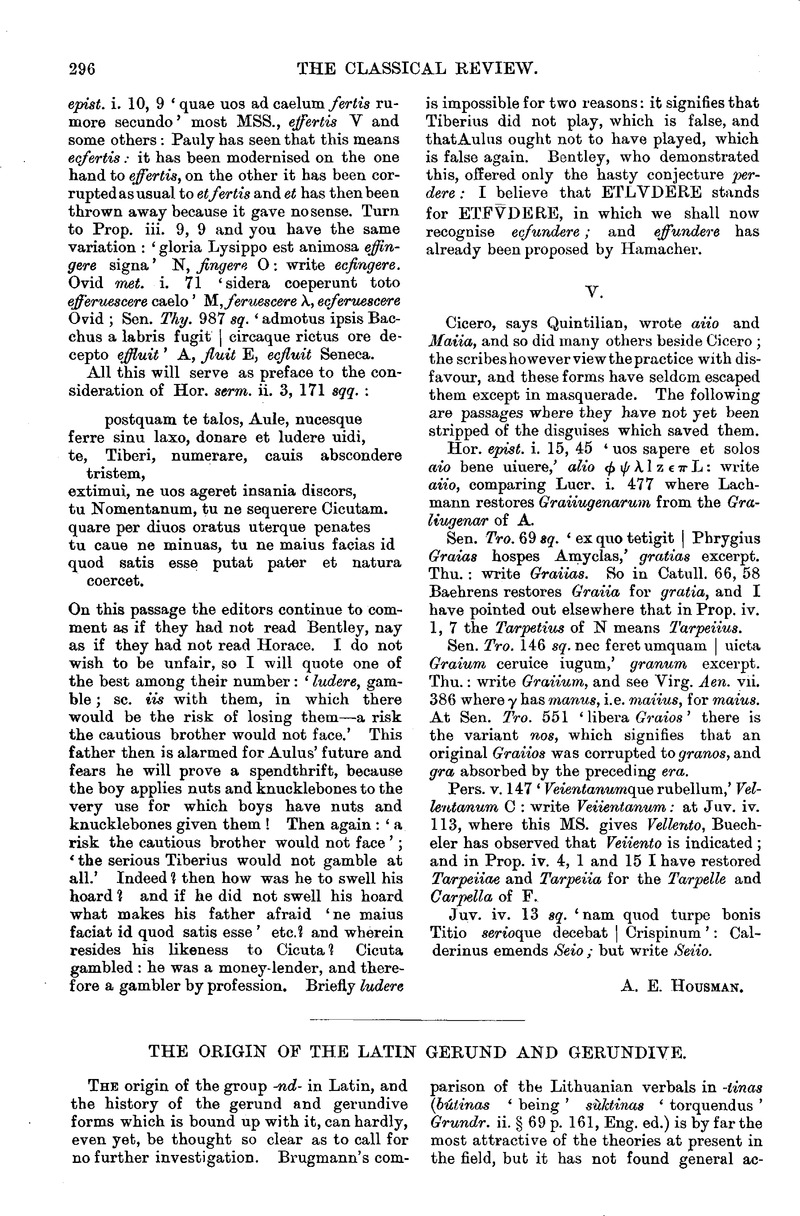No CrossRef data available.
Article contents
The Origin of the Latin Gerund and Gerundive
Published online by Cambridge University Press: 27 October 2009
Abstract

- Type
- Other
- Information
- Copyright
- Copyright © The Classical Association 1891
References
page 297 note 1 Primitive forms which contradict ordinary grammatical analogies hold their ground best (against the levelling tendency) in words that are in hourly use; fert, est, it, are practically the only non-thematic verbs left in Latin, and in Greek it is the well-worn that have preserved the intricate inflexion of the verbs in μι.
page 297 note 2 The -sis of -ensis is difficult. Is it parallel to the -sio- which forms so many derivates, Plana-sia, contrā-riu-s, aquā-riu-s, etc.?
page 298 note 1 See also C. R. iii. p. 469.
page 299 note 1 Brugmann Grundr. ii. § 140, 4, Whitney, Skr. Gramm. §§ 965, 966, 1217.
page 299 note 2 dispennite from dispendo may be thought to prove that -nd- did become -nn- in some dialect, since pando certainly contains an I. -Eu. -nd-. But it is probably only an incorrect dialecticism, on the pattern of distennite. Would more exactness be expected in representing dialects in a modern farce?
page 300 note 1 φο⋯υιοϛseems a confusion of φουιοϛ and φοιυ⋯ϛ (the latter is only quoted from Nicander).
page 300 note 2 See Dr. Fennell's pamphlet on ‘The Indo-European Vowel System.’ Its main contention, the importance of syllabism in phonetic change, and its connexion with accent, appears to me most important, though I cannot accept the wider applications of ‘Fennell's Law’ which its author would give to it.


